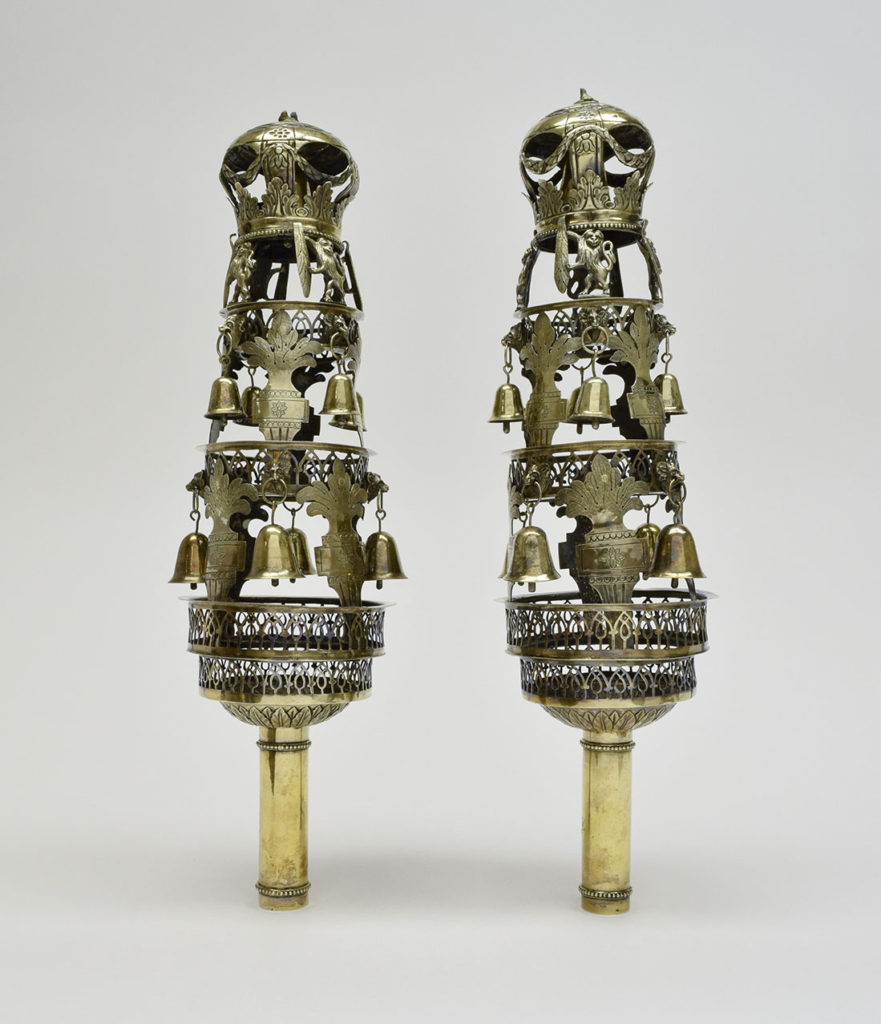Torah Finials
Carl Bitzel (1749-1823)
Silver: repoussé, pierced, engraved, and cast; 18 1/16” inches/ 18 ¼” x diameter 4.92” inches
Augsburg (Germany) 1803
B’nai B’rith Klutznick National Jewish Museum Collection of the Cincinnati Skirball Museum, gift of Joseph B. and Olyn Horwitz, 2015.17.430 a & b
There is a long artistic tradition of embellishing the scroll of law with silver ornaments to fulfill the requirement of hiddur mitzvah (enhancement of the religious act). Over the centuries, regionally and temporally different designs for rimmonim have developed. These delightful rimmonim are constructed as a high openwork three-tiered steeple. The two middle tiers each have four bells, which are held in rams’ mouths. The top tier is ornamented with festoons, surmounted by a ring of acanthus leaves and supported by lions mounted on their hind legs with palm fronds underneath. As older photographs and catalogue entries of these objects indicate that there was originally a round medallion at the very top of each finial; these are missing today. Apparently, these medallions were inscribed with the Hebrew names of the objects’ original owners. Records indicate that the inscription was identical with the dedication inscribed on a Torah shield in the Skirball collection (2015.17.147), which reads: “Samuel son of Nathan Arieh HaCohen, Tirzah daughter of Joshua.”
Carl Bitzel, the maker of the rimmonim, was active in Augsburg (southern Germany) in the late 18th and early 19th centuries. Based on its hallmarks, these rimmonim can be dated to the year 1803 . In addition to profane silver works, the Catholic silversmith Bitzel repeatedly created Jewish ceremonial objects commissioned by Jewish patrons, such as Torah ornaments or Hanukkah lamps. It was by no means uncommon at that time in this region for Jewish patrons to approach Christian silversmiths to supply objects for religious use.

